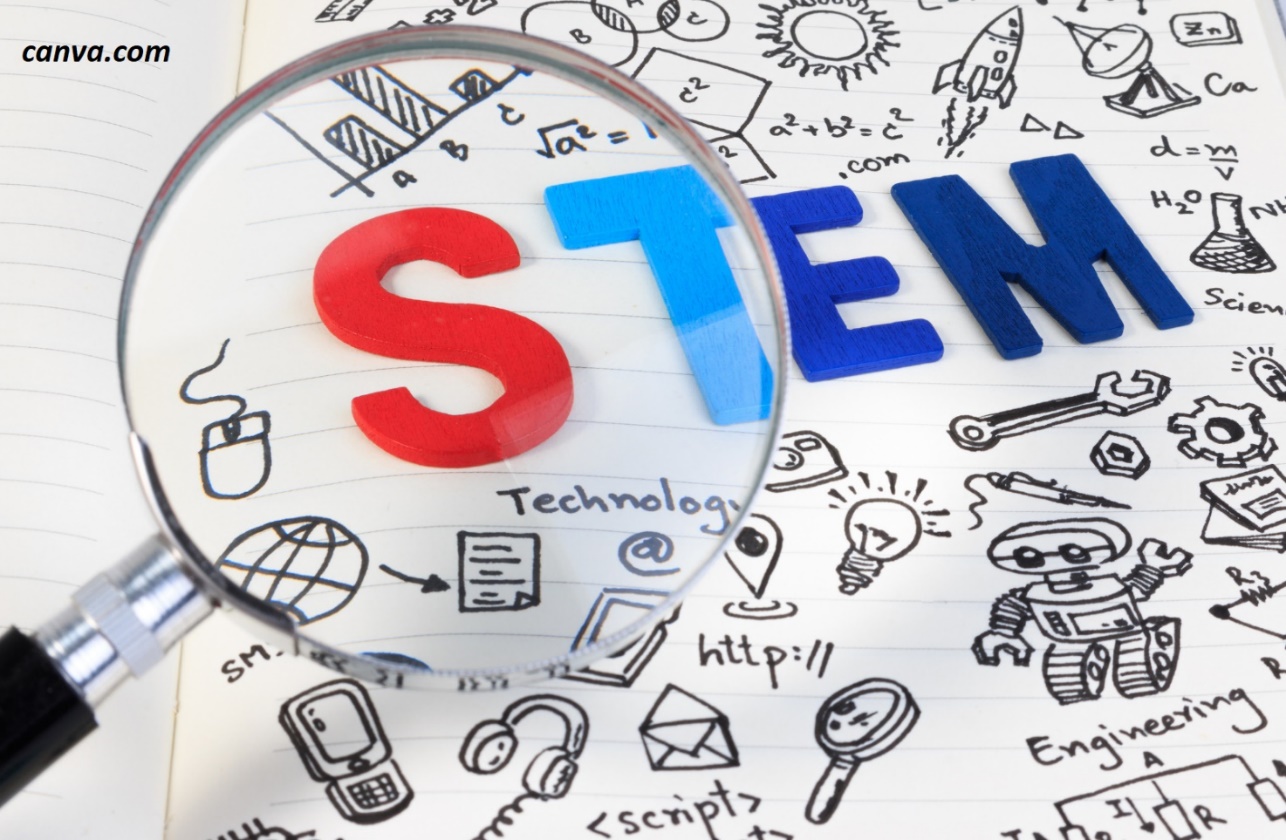Module 1
Career Counselling for the Digital Economy and STEM Careers
Short Description
The digital economy and the gig economy are intertwined, and for career counsellors in STEM fields, understanding both is crucial for effectively guiding their clients. This module is dedicated to all career counsellor who would like to upgrade or learn something new about the era of the digital and AI working places, as many of them have never been seen before.
Here are the main reasons why to develop and upgrade your understanding and knowledge on the field:
- Rise of the Gig Economy in STEM: Freelancing and Contract Work: Many STEM fields are experiencing a rise in freelance and contract work. Platforms like Upwork and Fiverr connect businesses with skilled professionals for specific projects, offering flexibility to both parties,
- Project-Based Roles: Companies are increasingly hiring for project-based roles, requiring STEM professionals to adapt to a more temporary work style,
- Remote Work Opportunities: The digital economy facilitates remote work, allowing STEM professionals to access a wider job market and potentially find work-life balance,
Why Career Counsellors in STEM Need to Understand the Gig Economy:
- Career Guidance: Counsellors need to be aware of the changing landscape of STEM careers and advise clients on navigating the gig economy. This includes discussing platforms, contract negotiations, and self-employment considerations like taxes and benefits,
- Skill Development: The gig economy often demands different skillsets than traditional employment. Counsellors can help their clients develop skills like self-marketing, project management, and time management, all crucial for success in the gig economy,
- Career Path Options: Not everyone wants full-time employment, and the gig economy offers diverse pathways. Counsellors can help clients identify fulfilling career paths within the gig economy, whether it's freelancing full-time or supplementing a traditional job,
- Future-Proofing Careers: The digital economy is constantly evolving, and the gig economy is likely to play a bigger role in STEM fields. Understanding it allows counsellors to prepare their clients for a future where adaptability and diverse skillsets are paramount.
Benefits for Career Counsellors:
By understanding the gig economy, career counsellors in STEM fields can:
- Offer more comprehensive career advice,
- Attract clients seeking guidance in this growing work environment,
- Stay relevant in the evolving job market.
Overall, understanding the digital economy and the gig economy equips career counsellors in STEM fields to provide more relevant and valuable guidance to their clients, preparing them for the changing landscape of work.
An Overview of the Digital Economy
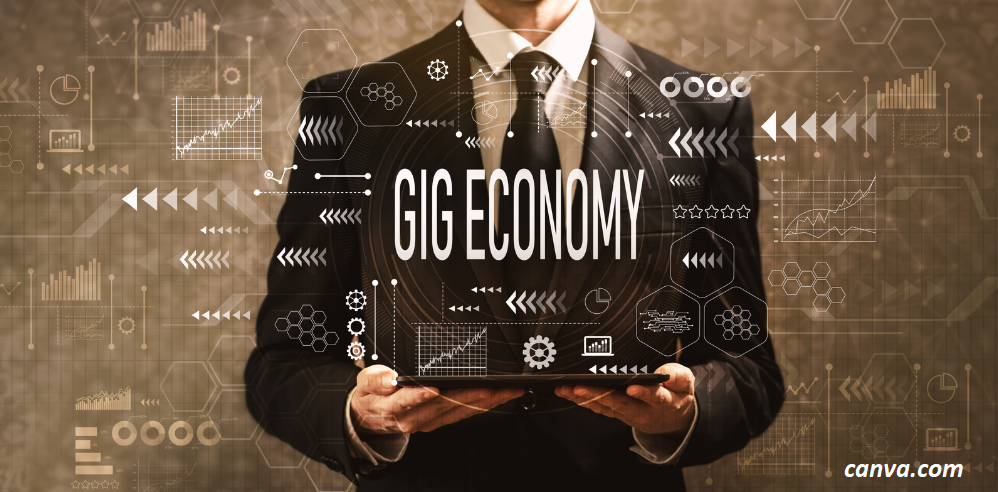
The world as we know it is constantly changing, and one of the main drivers of this change is the digital transformation. This transformation is primarily associated with the introduction and use of the latest technologies in more and more areas of life. The concept of transformation refers to the use of digital technology to transform services or businesses, relationships, communication, to create new opportunities for work and discoveries in all aspects of science. This is achieved by replacing non-digital processes with digital ones or replacing outdated digital technology with modernized and contemporary technology.
The scale of the digital transformation is global and is happening at a breakneck pace.
As a result of this transformation, we are now talking about the "Digital Economy" - the economic activity that is the result of billions of daily online connections between people, businesses, devices, data and processes, satellites and all kinds of devices above and below the Earth's surface. The backbone of the digital economy is the hypersensitivity of structures, people, organizations and machines, resulting from the Internet, mobile technologies and the Internet of Things (IoT).
The Digital Economy: A Revolution in How We Work, Live, and Communicate
The digital economy has fundamentally transformed our understanding of how organizations are structured, the tools they use, and the speed at which they carry out processes – from schools and kindergartens to universities, government administration, science, and private businesses. The nature of communication has also been completely changed – both locally and internationally. New laws and regulations have been introduced to protect businesses and the interests of the state, people, and the environment.
The way people access services, manage their money, handle the vast amount of information and goods, communicate with the state and government agencies, and even how people communicate with each other in their social circles has also undergone a radical change.
All of this has affected the majority of professions – some more than others. Business management, human resources, mental and physical health care, environmental protection, learning and development processes, the concept of lifelong learning, stress and well-being management, management of intercultural differences, the sense of belonging and connection, for meaning and the opportunity for people to know and develop their own potential, the possibility for employees to work more and more flexibly and remotely, building an employer brand from the inside out – these are just a few of the changes that have taken place in people management in corporations.
It has come to the point where large and influential companies like UBER & Airbnb do not have their own fleet or properties, Facebook does not create its own content, and some of the largest online retailers do not have their own inventory – a business model unheard of until recently. This has also changed the positions and nature of the work that people are currently doing and that were not even conceivable 10 years ago.
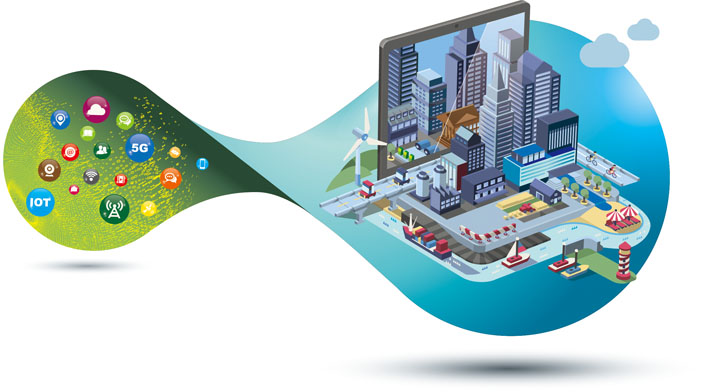 Image source: https://e.huawei.com/ in the article: Intelligent Cities Enable the Digital Economy and Drive Growth, https://e.huawei.com/kz/ict-insights/global/ict_insights/201908281022/special-report/201911081512
Image source: https://e.huawei.com/ in the article: Intelligent Cities Enable the Digital Economy and Drive Growth, https://e.huawei.com/kz/ict-insights/global/ict_insights/201908281022/special-report/201911081512
The Rise of Hybrid and Remote Work Models
The global pandemic has accelerated the adoption of hybrid and remote work models, project-based work, and freelance arrangements. This has led to unexpected career mixes, with people increasingly working on multiple different projects or roles, often in surprising combinations.
Customer-Centric Approach and the Rise of Big Data and AI
Alongside the shift towards hybrid and remote work, a strong emphasis has been placed on customer experience. In the digital realm, customers are tracked, profiled (digital ID and footprint), and presented with personalized content across various channels they utilize. The algorithms governing these interactions are constantly evolving and adapting. Adding to this is the development of emotionally charged content – videos, blogs, podcasts. New professions have emerged, such as Facebook profile specialists (responsible for creation, planning, building, customer communication, content and images, events, posts, polls) and digital marketers. Influencers have also emerged, captivating younger generations in ways that were unimaginable to previous generations and business practices.
The vast amount of data collected daily on habits, consumption patterns, movement, needs, conversations, keywords, location, images, and more has opened a gateway to another dimension – big data science and AI.
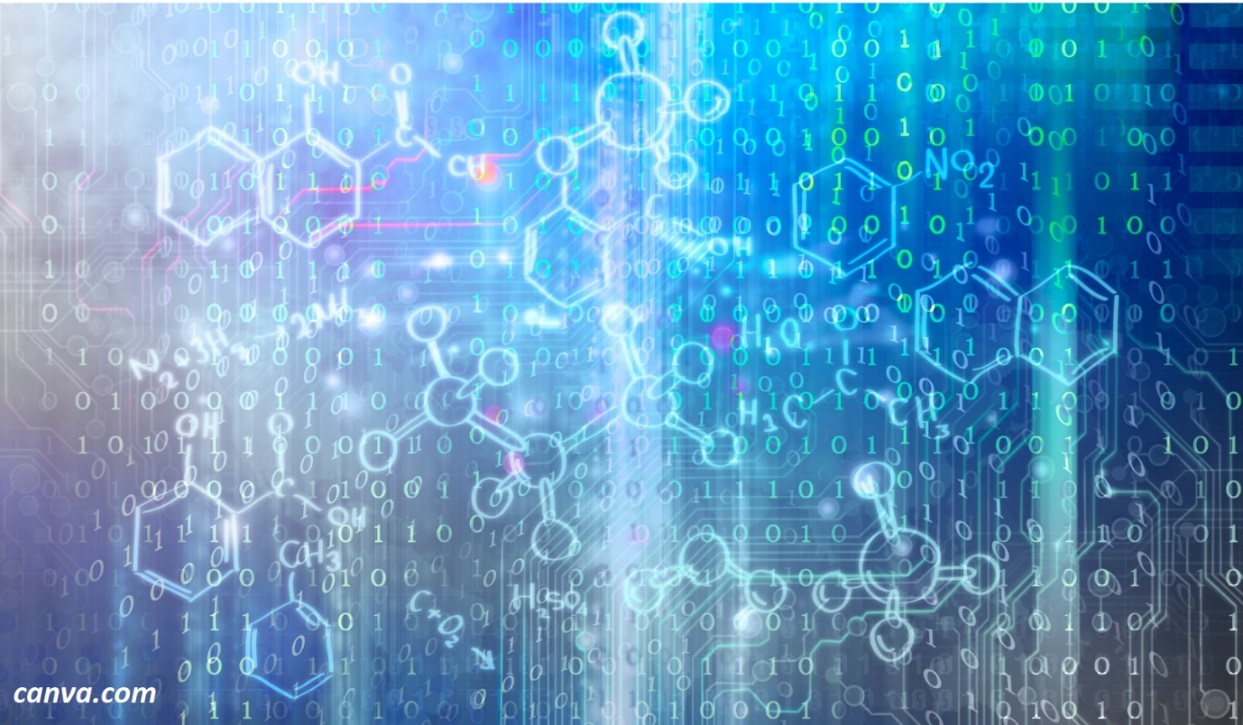
The development of science and STEM fields
Science, for its part, especially STEM fields, is benefiting from all these digital transformations, technologies, processing capability, and the creation of models that simulate and predict complex systems such as climate. The most frequently commented and largest-scale transformations are the following directions:
- Enhanced Data Collection and Analysis
The digital world generates vast amounts of data. This data can be analyzed by scientists using sophisticated computational tools and algorithms to uncover hidden patterns and relationships that were previously unobservable.
Fields like neuroscience, genomics, astronomy, and climate science heavily rely on large datasets for scientific breakthroughs.
- Improved Collaboration and Communication
Digital tools like video conferencing, cloud storage, and online collaboration platforms allow scientists worldwide to work together on research projects in real-time, regardless of location, time zone, and any other limitations such as physical health, financial means, or political or religious affiliations.
This fosters faster innovation and knowledge sharing within and across STEM disciplines..
- Advances in Research Tools and Techniques
The digital economy fuels the development of sophisticated research tools and techniques. These advancements enable scientists to conduct more precise, efficient, and groundbreaking research.
Examples of Advanced Research Tools and Techniques:
High-Performance Computing: Powerful supercomputers (these machines enable scientists to simulate complex phenomena); Distributed computing (this approach harnesses the power of multiple computers).
Advanced Imaging Technologies: Medical imaging (techniques like MRI, CT scans, and PET scans); Microscopy (advanced microscopes, such as electron microscopes and atomic force microscopes, allow scientists to visualize structures at the nanoscale, enabling research in fields like cell biology, materials science, and nanotechnology).
- Automation and robotics
Automation and robotics are playing an increasing role in scientific research.
Robots can perform tedious tasks such as data collection, sample preparation, and experimentation, freeing scientists to focus on analysis and interpretation. The precision and consistency of robots still surpasses that of humans, but that's the point!
- Financing, Investments, Banking and Payments
The digital economy has created new opportunities for research funding. Venture capitalists and private investors are often attracted to technology-driven scientific breakthroughs with potential commercial applications. This could lead to increased funding for cutting-edge research in areas such as biotechnology, artificial intelligence and renewable energy. Funding alone has unlocked the creative potential of people worldwide. They were encouraged to experiment and implement unseen products and services, most often in teams of other brilliant visionaries.
On the other hand, the ways in which citizens carry out financial operations - as private individuals or business representatives - have completely gone online. This also affected the collection of fees from state and local structures, facilitating communication between people and the state through the so-called e-governments (portals through which this interaction takes place).
- Citizen Science and Open Science
Online platforms and mobile applications allow the public to participate in research through citizen science initiatives. This "crowdsourcing" can greatly contribute to large-scale research projects in ecology, astronomy and environmental sciences.
Open Science initiatives, where research data and findings are shared openly online, promote transparency and accelerate scientific progress.
The digital economy is not without its challenges for science, such as data privacy concerns and the digital divide that limits access to these advances. However, the overall impact of the digital economy on science is significant for research and innovation, especially in STEM fields.
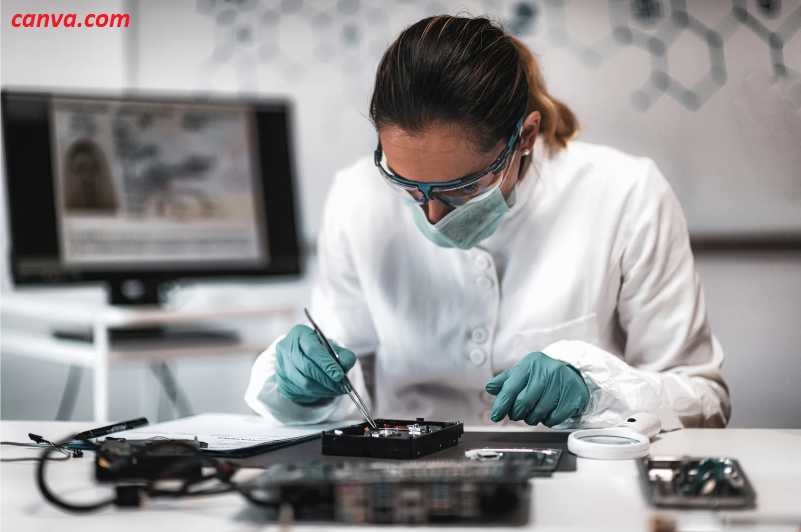
Myths about the digital economy
(or rather, a lack of understanding of the interrelationships of the economy, climate and human population)
The digital economy comes with its price, which we all pay. Let's see the other side of the coin - myths, challenges, risks, insurance related to the digital economy and digitalization of life and work, as well as climate change, biodiversity conservation and pollution and waste reduction.
Myth 1. The digital economy is incredibly profitable and generates unprecedented wealth for individual countries, companies and people.
No one has abolished the laws of the market, nor eliminated competition for money and supremacy. However, there is something that is stronger than them and which we often feel lately - these are the laws of nature. Fortunately, there are already many European and global policies to explore and protect it, including how business and people should interact to build a sustainable future for generations to come.
Here are some simplified examples:
- If the temperature reaches 54 degrees Celsius (recorded in 2016 in a number of countries and cities), the gasoline in the tanks begins to evaporate quickly. This means that you will not be able to drive your car using the old type of construction and fuel storage method. Accordingly, all vehicles built on this principle become useless. And although a number of countries have begun to support the purchase of electric vehicles and the replacement of the fleet, this comes with a price - financial resources, an enormous need for electricity, natural resources that are invested in the new components (which are in short supply and lead to a number of ecological disasters in the places where they are mined,
- In the US, 75% of homes have solar panels, and on the face of it, that means free car charging. Powerful energy storage solutions are also available on the market, but again the price is too high (environmentally, financially, socially),
- If the temperature rises, then the Earth will heat up faster and the water - more slowly. The wind that arises in such situations can not only carry clouds of smoke thousands of kilometres away but be so strong that it tears off a roof or uproots a tree and brings it down on a person, a building, a vehicle. This smoke cloud behaves like water or lightning. Which in turn means that infrastructure on a global scale needs to be renewed and strengthened, able to withstand the changes that are coming, and at the same time it is necessary to reduce greenhouse gas emissions. This already gives rise to common plans (as Paris Agreement, etc.). Which makes it imperative to invest public money. Moreover, these cars are not even as numerous as thermal plants,
- And this is already a change in the structure of the entire sector energy industry, which are additional costs,
- One of the most pressing problems for many cities around the world is the sharp rise in temperature in them compared to the temperature in agricultural areas. This difference can reach more than 12 degrees, which is a prerequisite for the occurrence of abrupt climate changes. This also requires a new approach to urban architecture, the use of new materials, afforestation with a mixture of suitable plants and trees, ancient and water areas - all things directly related to the development of the consequences of the construction and strengthening of the digital economy and the urbanization of large territories. And with huge additional costs.
It looks like the digital economy is at the heart of the transformation of the entire world, and the cost is huge.
Myth 2. The digital economy is information and communication technologies.
It is true that their role is huge, but based on the above, the priority is more the physical changing infrastructures. If the road is in bad condition, then the cars will not move faster, and in turn, the infrastructures depend on the processes that occur in nature.
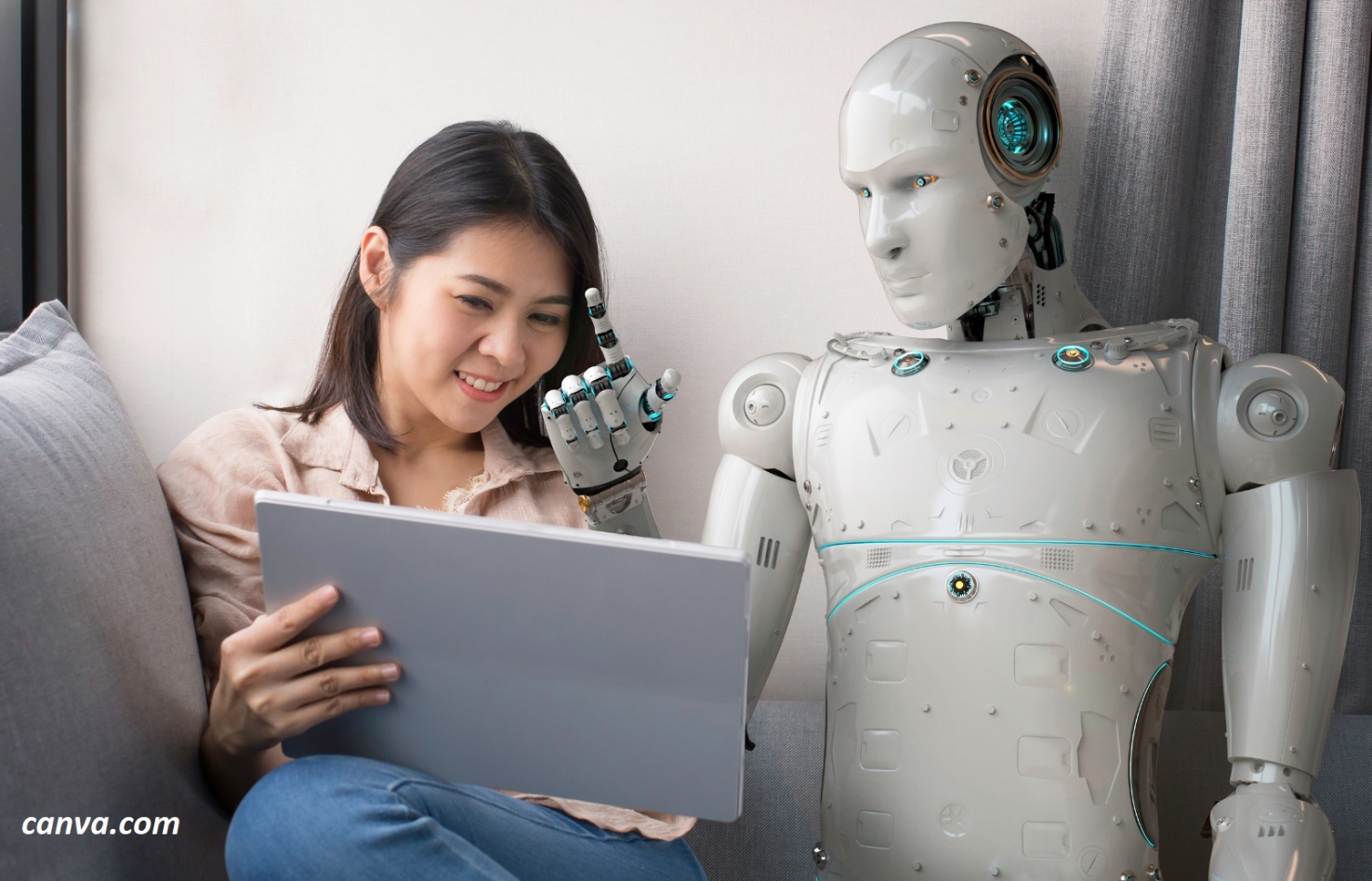
Myth 3. The digital economy means unemployment, humans will be replaced by robots, etc.
Of course, many occupations will change or completely disappear due to automation. Which already raises the question of retraining and the way of life and livelihood of these people. And this is not the first time we have witnessed such processes. In a study by DHL "Robotics in logistics" (Robotics in logistics. 2016. DHL) about the shortage of personnel in two markets - Germany and the USA, it is shared that the search for suitable qualified employees in sufficient quantity for transport and logistics is extremely difficult. Firstly, because e-commerce has "exploded" the need for transport services and employees, and secondly - due to reduced population growth in the Western world. This also leads to new migration processes, based on people's spontaneous desire to have a better life and work, but it is also a consequence of international agreements on cooperation, exchange, investments. This, in turn, raises and deepens the topic of intercultural communities - in society and in the market of another, in an organizational environment. Which leads to the development of new job titles (People Culture) and people skills for professionals in the supporting professions. The forecasting and planning of the workforce, its skills, qualifications, attitudes, motivation – is now international and global, not just national or local.
This is where robots and robotics come to the rescue. They are not expected to displace people, but to compensate for the shortage of skilled labor in certain places.
But the question arises how to plan what specialists will be needed and whether the educational system (school and universities) will be able to adapt to the unprecedented rapid development of technologies, business needs and business processes.
An interesting example: In Great Britain, for the period 2010-2020, the forecast was for a shortage of 1.86 million engineers with education and skills to work. Draw your own conclusions!
 Myth 4. The digital economy is essentially the same structure, only with more computers
Myth 4. The digital economy is essentially the same structure, only with more computers
The old perception is that the economy is agriculture, heavy industry, transport, logistics, energy, etc. – or the so-called a vertical economy, where development in one sector from the bottom up is the usual path for people to develop.
Today, however, the components of the digital economy have completely different names: APP economy, e-commerce, sharing economy, circular economy, creative economy, green economy, IoT economy, even pedestrian economy and electric autonomous car economy! The development of people in them and their freedom from one "economy" to another speaks of a horizontal structure, allowing people to develop and use more of their potential and capacity, to follow their interests and to use emerging opportunities. Because often they themselves create the professions/positions they work in, they are often entrepreneurs and founders of unprecedented and innovative services and technologies.
In summary
Critical thinking is a skill that everyone should have. That is why we have offered you a slightly more extensive overview of the digital economy phenomenon. It is important to understand and be able to share with our customers - young girls who have chosen or are hesitant to take the path of digital professions, the complex interrelationships between the digital sector and all other aspects of life. And STEM professions have an increasingly decisive and significant role for the well-being (and survival) of humanity. Lifelong learning, curiosity and the spirit of experimentation will support the development of people's potential in conditions of unprecedented changes. So it will be important for your clients to be able to learn, organize, communicate, present, no matter what career path they take.
And for you, as career consultants and specialists, it will be important to understand and anticipate the development opportunities for each of your clients in relation to their personal characteristics and preferences on the one hand, and on the other - the opportunities that life offers on a local or global scale. Your role will be to inspire and inform them, for which you yourself need to be a few steps ahead and not stop walking.
How digital technologies have stimulated the career choices in STEM
The adoption of digital technology in STEM education increases students' interest and competence in STEM subjects, which directly affects their career aspirations. Even more, the digital skills acquired through STEM education contribute significantly to job readiness in the STEM sector. Significant role for this plays the project-based and collaborative learning approach during the academic period of people enriched with various digital technologies to prepare students for the changing work environment. Because STEM professions can become desirable if habits of using digital technologies, modern and interactive learning tools, projects and experiments are built even in a school environment. Alongside with competent teachers, lecturers, and practitioners from various aspects of industries, who are involved in the process of filling the gap between business’ needs and educational system.
Recent research shows that:
- an increase in student interest in STEM fields influenced by the integration of digital technology in education (Ortiz-Laso et al., 2023),
- the digital tools such as educational apps, e-learning platforms, and interactive simulation tools has provided new, more exciting ways for students to learn STEM concepts. For example, VR simulations in biology allow students to see biological processes never seen by the previous generations in such a big scale,
- the use of technology in education has inspired students to explore STEM fields in more creative and innovative ways,
- social media and online collaboration play crucial role in the rapid development of young people’ interest in STEM,
- all these factors support the increasing competence of young people and experienced professionals, bringing them closer to each other,
- a significant part of someone’s choice in STEM education and professional development is the skills and knowledge gathered before.
Understanding the landscape of digital STEM careers: Exploring various specializations and career paths.
The beauty and paradox of the new digital professions is that they are all connected. It takes more than one professional (or a team with the same professional characteristics) to be successful. Think of the following examples as constantly connected points, like the people around the Sacred tree in the Avatar movie.
Among the most popular modern digital STEM career opportunities, each of them with different levels of usage of digital technologies and remote work, are:
- Software Engineer: This is a classic remote-friendly STEM role. Software engineers design, develop, test, and maintain software applications. They use various programming languages and tools to create the digital products we use every day,
- Data Scientist: Data scientists use their knowledge of statistics, programming, and machine learning to extract insights from large datasets. They work remotely for companies of all sizes, helping them make data-driven decisions,
- UX/UI Designer: These creative thinkers design the user experience (UX) and user interface (UI) of digital products. They focus on usability, aesthetics, and functionality to create user-friendly interfaces for websites, apps, and software,
- Web Developer: Web developers build and maintain websites and web applications. They use programming languages like HTML, CSS, and JavaScript to create the front-end and back-end functionality of websites. Many web developers work remotely for agencies or freelance,
- Cybersecurity Analyst: Cybersecurity analysts protect computer systems and networks from cyberattacks. They use their technical skills to identify vulnerabilities, implement security measures, and respond to security incidents. The demand for cybersecurity professionals is high, and many companies offer remote work options,
- Business intelligence analyst: BA is currently one of the highest demand jobs in the EU. Due to the functioning of the modern economy, it is believed to continue to grow in the future, as it is in demand in various industries. A business intelligence analyst breaks down key business data by gathering, cleaning, and analyzing a company or organization’s data like revenue, sales, market information, or customer engagement metrics. BA also programs tools and data models to help companies and organizations better visualize or monitor processes, trends, critical issues, and opportunities,
- Digital marketing manager: With people more and more connected to digital platforms, maintaining a social presence has become the number one marketing strategy. A digital marketing manager is responsible for maintaining an individual, company or organization’s brand’s online presence, considering the behaviour of online users. Its duties include researching, strategizing with other professionals, creating content for successful online marketing campaigns, measuring and reporting on their performance, with the goal of reaching out to as many targets as possible,
- Artificial intelligence engineer: Work in research institutions or technology companies, focusing on cutting-edge artificial intelligence (AI) research, algorithms, and machine learning models. This can involve developing new AI techniques, improving existing algorithms, and pushing the boundaries of AI technology. Contribute to the development of AI-based solutions for fraud detection, risk assessment, algorithmic trading, personalized banking, and customer support in the financial sector (fintech).
 These all may sound like all part of the T – technologies in STEM, so let’s have a deeper look in the other areas such as Science, Engineering, Mathematics. The examples given are usually not the first thing that comes to mind when we talk about STEM careers with digital aspect:
These all may sound like all part of the T – technologies in STEM, so let’s have a deeper look in the other areas such as Science, Engineering, Mathematics. The examples given are usually not the first thing that comes to mind when we talk about STEM careers with digital aspect:
Science:
- Marine Biologist (Remote Analysis): Analyze data and video footage collected by research vessels or autonomous underwater vehicles to study marine life and ecosystems,
- Chemist (Computational Chemistry): Develop and use computer simulations to model and predict the properties and behavior of molecules and materials,
- Environmental Scientist (Data Analyst): Analyse environmental data sets such as air quality, water quality, and climate data to identify trends and develop solutions to environmental problems,
- Microbiologist (Bioinformatics): Use computational tools to analyse genetic data from microorganisms to understand their biology and develop new drugs or treatments,
- Astronomer (Observatory Data Analyst): Analyse data collected by telescopes to study stars, planets, galaxies, and other astronomical phenomena.
Engineering:
- Mechanical Engineer (3D Printing Design): Design and develop mechanical parts and systems using 3D modelling software for remote fabrication,
- Electrical Engineer (Circuit Design): Design and analyse electrical circuits using computer-aided design (CAD) software,
- Civil Engineer (Structural Analysis): Use computer software to analyse the structural integrity of buildings and bridges,
- Chemical Engineer (Process Simulation): Develop and use computer simulations to model and optimize chemical processes for industrial applications,
- Software Engineer (Embedded Systems): Develop software for embedded systems, which are small computers used in a variety of devices such as cars, appliances, and medical devices.
Mathematics:
- Financial Analyst (Quantitative Analyst): Develop and use mathematical models to analyse financial markets and make investment recommendations.
- Data Scientist: As mentioned previously, data science utilizes a lot of mathematical modelling and statistical analysis.
- Cryptographer: Develop and analyse encryption algorithms to secure data and communications.
- Operations Research Analyst: Use mathematical models and optimization techniques to solve problems in areas such as logistics, supply chain management, and scheduling.
- Mathematician (Research): Conduct research in pure mathematics, focusing on areas such as algebra, calculus, and topology. While some mathematical research may require lab or fieldwork, much of the theoretical analysis can be done remotely.
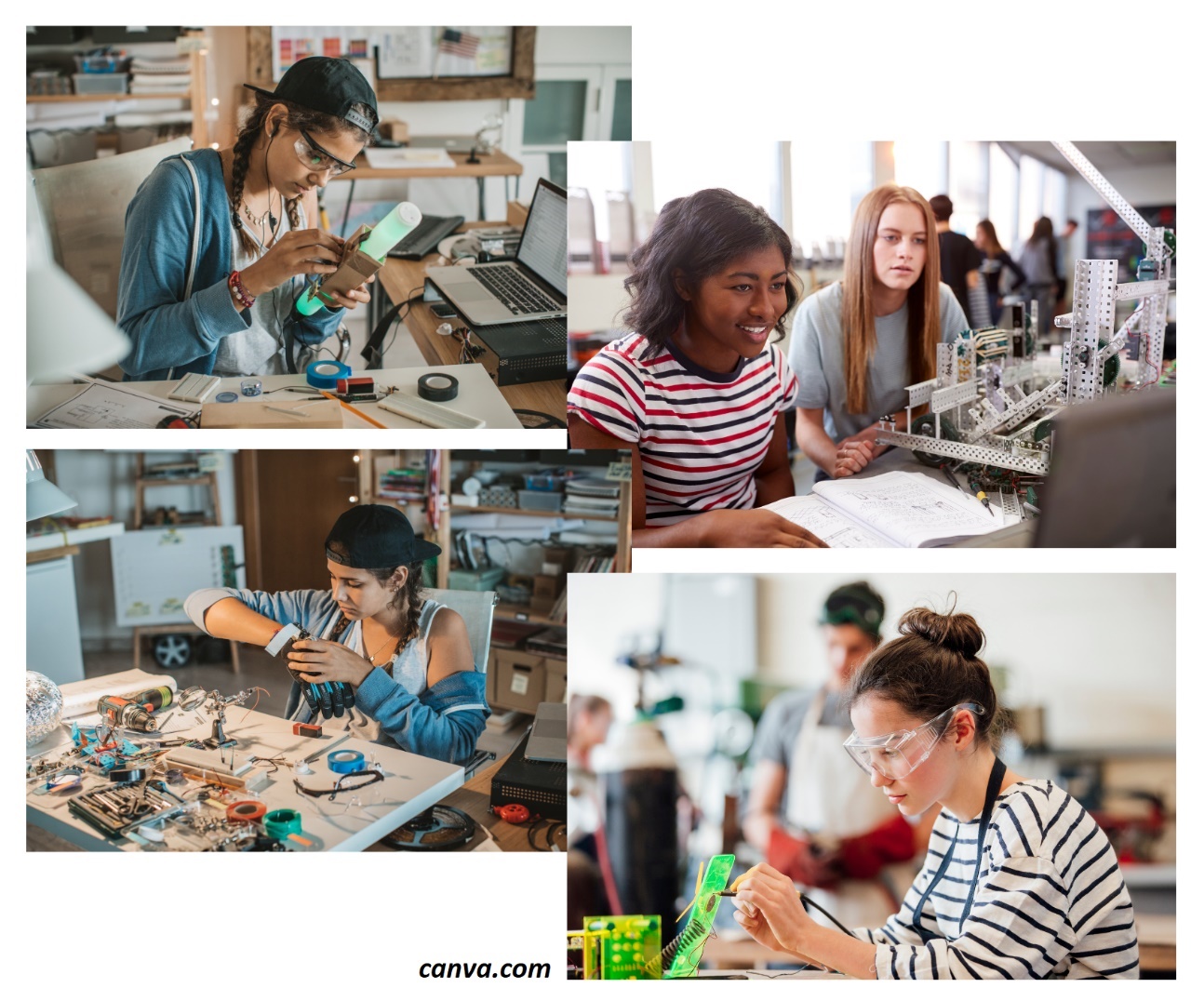
Girls in the digital STEM professions
Considering the nature of girls, their creativity, problem-solving skills and inclinations, and making a positive impact, they might tend to be more interested in related opportunities, where all their talents, values, ideas for the future to find a fertile soil. These might be:
- Game Developer: Design and develop video games, combining artistic skills with programming to create fun and engaging experiences. Girls can use their creativity to design characters, storylines, and game worlds, while also learning valuable coding skills. The games are also used widely in the education of all levels and areas,
- Educational Technology Specialist: Develop and implement educational software, apps, and other digital tools to make learning more interactive and engaging. This role allows young women to combine their interest in technology with a passion for education, potentially shaping the future of learning,
- Web Designer: Craft the visual appearance and user experience of websites. This role allows for creativity in designing layouts and user interfaces, while also incorporating technical skills like HTML and CSS. Young women can use their artistic eye to create beautiful and user-friendly websites,
- 3D Printing Specialist: Design and create objects using 3D printing technology. This field allows for creativity in product design and combines it with technical skills in 3D modeling software. Girls can see their ideas come to life in a tangible way,
- Cybersecurity Analyst (with focus on social media): Help protect social media platforms and users from cyberattacks and online harassment. This role combines technical skills with an understanding of online communities, allowing young women to make the internet a safer place,
- Environmental Data Scientist: Use data analysis to study environmental issues like climate change and pollution. This role allows girls to combine their passion for the environment with their math and coding skills to find solutions to real-world problems,
- Assistive Technology Specialist: Develop and implement technology solutions to help people with disabilities live more independent lives. This role allows young women to use their problem-solving skills and technical knowledge to make a positive impact on others,
- Fashion Tech Designer: Combine fashion design with technology to create innovative clothing and accessories. This role allows for artistic expression while incorporating technical skills like coding or 3D modeling. Young women can use their creativity to push the boundaries of fashion design,
- AI for Social Good Specialist: Develop and implement artificial intelligence (AI) solutions to address social challenges like poverty, hunger, and education inequality. This role allows young women to make a difference in the world by using cutting-edge technology,
- VR/AR Developer: Design and develop virtual reality (VR) and augmented reality (AR) experiences for a variety of applications such as education, entertainment, and healthcare. This role allows young women to be at the forefront of emerging technologies and create immersive experiences.
As medicine is one of the areas where women find professional realization, it is also full of digital possibilities, that are not easy to be discovered at one. Positions as:
- Digital Therapist: Utilize video conferencing and online platforms to deliver therapy sessions for mental health concerns, making mental healthcare more accessible remotely,
- Telehealth Nurse: Provide remote patient monitoring and support through video calls and digital tools, increasing access to healthcare in underserved areas,
- mHealth App Developer: Design and develop mobile health applications to promote healthy habits, track fitness goals, and manage chronic conditions,
- AI-powered Healthcare Analyst: Analyze large datasets of medical records to identify trends, predict patient outcomes, and improve healthcare delivery.
- Assistive Technology Specialist (Healthcare Focus): Develop and implement technology solutions like wearable devices or specialized software to assist people with disabilities in managing their health and well-being.
- Digital Wellness Coach: Use online platforms and wearables to provide personalized coaching on nutrition, exercise, and stress management, promoting overall well-being.
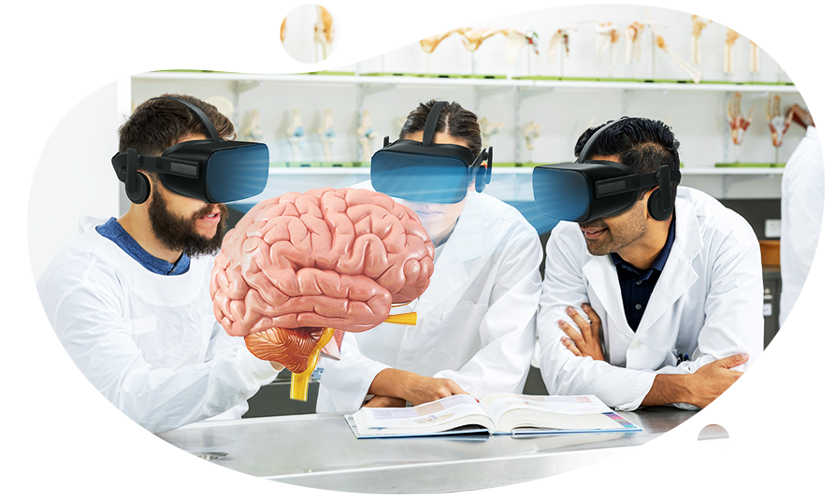 E-learning Specialist (Healthcare): Develop engaging online courses and training programs for healthcare professionals, ensuring continuous learning and skill development.
E-learning Specialist (Healthcare): Develop engaging online courses and training programs for healthcare professionals, ensuring continuous learning and skill development.
Image source: https://www.ixrlabs.com/blog/virtual-reality-applications-in-medical-education/
- Digital Accessibility Specialist (Healthcare): Ensure healthcare websites, apps, and digital tools are accessible to people with disabilities, promoting digital inclusion in healthcare.
- Learning Management System (LMS) Administrator (Healthcare): Manage and maintain online learning platforms used for training and development of healthcare professionals within hospitals or healthcare organizations.
- Virtual Reality (VR) Therapist: Utilize VR technology to create immersive therapeutic experiences for treating phobias, phobias, anxiety, and PTSD.
Of course, not all these positions are available equally around Europe or the Globe. No matter that, you as a career counsellor, have the role of helping your clients to discover similar or completely new roles, based on the combination of their unique characteristics, skills, values, vision for the future, needs of the society they live in.
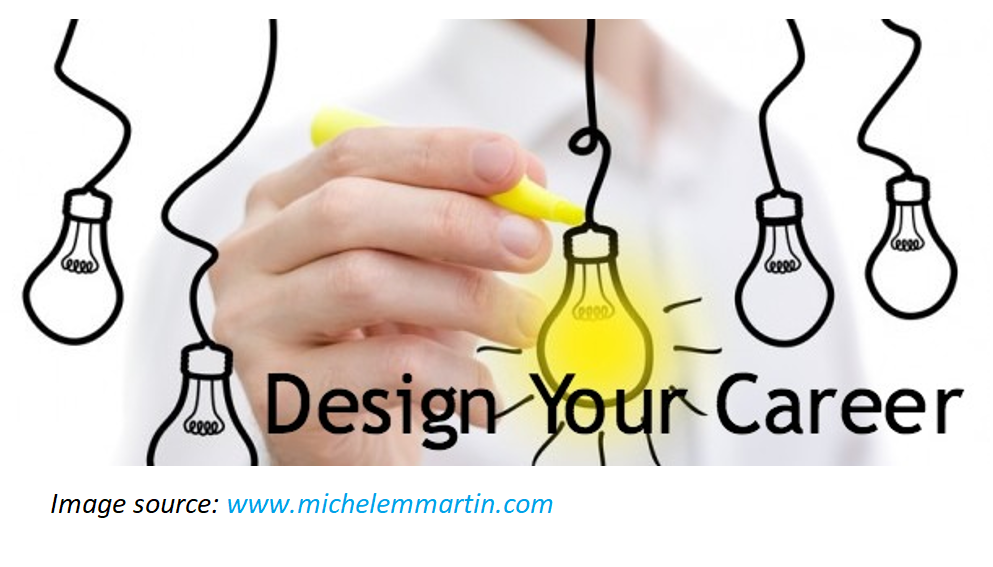
Future Career Mix for Women: A Portfolio of Skills and Projects
The traditional linear career path, where someone stays with one employer or area for decades, has dramatically changed. The future of work for women, and not only, is likely to be a portfolio career – a mix of tasks, projects, and employers throughout their professional lives. This offers flexibility and opportunities to leverage a broader skillset and gain different experience while contributing to important causes. Here's a brief overview of this future career mix suitable for women with many other social roles in live:
1. Skillsets over Job Titles:
- In the past, job titles dictated the skills needed. Now, women can build a portfolio of skills across different areas,
- For example, a data analyst might also possess strong communication and project management skills, allowing them to work on projects that combine data analysis with client presentations and team coordination.
2. Project-Based Work:
- Temporary or contract-based work on specific projects is becoming increasingly common,
- This allows women to choose projects that align with their interests and skillsets, gaining valuable experience in a variety of areas,
- For instance, a software engineer might work on a short-term project for a startup, then transition to a longer-term contract with a large corporation, all while building their portfolio.
3. Gig Economy and Freelancing:
- The gig economy allows women to offer their skills and expertise on a freelance basis,
- This provides flexibility and control over workload, potentially allowing women to balance work with family or other commitments,
- A graphic designer could freelance for several clients on a per-project basis, giving them variety and control over their schedule.
4. Remote Work Opportunities:
- Advancements in technology allow many jobs to be done remotely,
- This opens doors for women in geographically isolated areas or those seeking a work-life balance with remote work options,
- A marketing specialist could work for a company located across the country, eliminating the need for relocation.
5. Lifelong Learning:
- The rapid pace of change in the digital world necessitates continuous learning,
- Online courses, workshops, and certifications can help women keep their skills current and adapt to new technologies and trends,
- A data scientist could take online courses on the latest machine learning algorithms to stay at the forefront of their field.
Examples:
- Sarah, a data analyst: Sarah works full-time for a large corporation as a data analyst, but also takes on freelance data visualization projects for smaller companies on the weekends.
- Maria, a software engineer: Maria works as a contract software engineer for different companies, focusing on short-term projects that allow her to travel and explore different technologies.
- Chloe, a graphic designer: Chloe works remotely as a freelance graphic designer for a variety of clients, allowing her to set her own schedule and work from her home studio.
~ ~ ~
This future career mix offers women more autonomy and flexibility in their professional lives. By developing a diverse skillset and embracing project-based work, women can thrive in the ever-changing digital landscape.
~ ~ ~
Exercises for individual or group activities
-
- Professional family tree – create a professional tree of your family as far as you can get information. After you have all the professional occupations, add hobbies, interests, passions. At the end, try to discover for each of the relatives suitable corresponding occupations in the digital STEM area!
What conclusions can you draw?
- Professional family tree – create a professional tree of your family as far as you can get information. After you have all the professional occupations, add hobbies, interests, passions. At the end, try to discover for each of the relatives suitable corresponding occupations in the digital STEM area!
-
- Career map for digital STEM occupation: Imagine you ate about to work with a group of young women to encourage them to continue their education in the STEM area. The information that you have in advance is that they are not very willing to do so, as there is stigma and social pressure on them. Choose 3 different areas – fashion, education, and medicine for example, or others – as you prefer. Find at least 5 different digital occupations in each field and try to create a career map for each of them. Show the interactions between these 3 areas, the transferable skills, knowledge, competencies they share, and the unique opportunities each area offers.
If appropriate, work in groups. You can split the 3 areas between the groups and present your maps at the end.
- Career map for digital STEM occupation: Imagine you ate about to work with a group of young women to encourage them to continue their education in the STEM area. The information that you have in advance is that they are not very willing to do so, as there is stigma and social pressure on them. Choose 3 different areas – fashion, education, and medicine for example, or others – as you prefer. Find at least 5 different digital occupations in each field and try to create a career map for each of them. Show the interactions between these 3 areas, the transferable skills, knowledge, competencies they share, and the unique opportunities each area offers.
-
- Profession overview
- Choose 1 specific STEM area and 1 profession that you know little about.
- Research how digital technologies have transformed that profession in the past 10-15 years.
- Identify specific examples of how technology is used: for example, in design and development processes (e.g., 3D printing in engineering, bioinformatics in biotechnology), in data analysis and optimization, in communication and collaboration (e.g., cloud-based collaboration tools for remote teams).
- Summarize your findings in a short report highlighting the impact of digitalization on these professions.
- (group exercise) Imagine the future
- Imagine it is 2050. How some of the professions in the STEM area would look like?
- Brainstorm and describe: the environment, the clients and their needs, the results of the work, the skills, the relations with other professionals (people and maybe robots), the roles, personal life, etc. Make a presentation.
- Hints: You can use your favourite movies that describes future world. Don’t limit your imagination! Everything is possible.
- Professional atom of a new profession: based on the sociodrama method, create the atom (the connections and their strength) of a digital occupation by choice (by the STEM areas). You can use small or big objects or people (if you work in a group). Imagine and play (or conduct a monologue), answering some of the following questions;
- What am I (the role)?
- What am I doing?
- Why am I important?
- What are the other elements that are in relation with me?
- What kind of connections we have?
- What do they expect from me?
- What do we do together?
You can transform or add/extract questions to adjust the Professional atom to the environment you will be doing it.
Quizzes
External resources
- Definition: digital economy, https://www.techtarget.com/searchcio/definition/digital-economy
- What is digital economy?, https://www2.deloitte.com/mt/en/pages/technology/articles/mt-what-is-digital-economy.html
- How The Metaverse is Shaping the Fourth Industrial Revolution, https://www.youtube.com/watch?v=Enwu8plNdnk
- Демистификация цифровой экономики, http://injoit.org/index.php/j1/article/view/345/308
- The Danger of AI | Scary Technology | Artificial Intelligence | Documentary, https://www.youtube.com/watch?v=5guiUrgcblM
- The Impact of Technological Transformation on Career Choices in the STEM Sector, https://www.researchgate.net/publication/376983480_THE_IMPACT_OF_TECHNOLOGICAL_TRANSFORMATION_ON_CAREER_CHOICES_IN_THE_STEM_SECTOR
- Virtual Reality Applications in Medical Education, https://www.ixrlabs.com/blog/virtual-reality-applications-in-medical-education/
- Breaking Barriers: Celebrating 14 Famous Women In STEM, https://www.teachaway.com/blog/famous-women-in-stem
- What is a STEM Career?, https://girlstakethelead.org/blog/what-is-a-stem-career/
- The Development of Science Identity in Undergraduate STEM Majors: A Case Study of Urban High School Students, https://www.semanticscholar.org/paper/The-Development-of-Science-Identity-in-STEM-Majors%3A-McWilliams-Nims/df6c078d4d927e626e43508ca7f531628dc07750
- Design Your Career Series: Using Design Thinking to Create the Career You Want, https://www.michelemmartin.com/thebambooprojectblog/design-your-career-series-using-design-thinking-to-create-the-career-you-want.html
Videos:
- New Fully Electric Atlas Robot Revealed by Boston Dynamics, https://www.youtube.com/watch?v=raYWbqbZbmc
- The Superpowers of STEM | Stephanie Hill | TEDxMidAtlantic, https://www.youtube.com/watch?v=vUAQNCEXxAc

